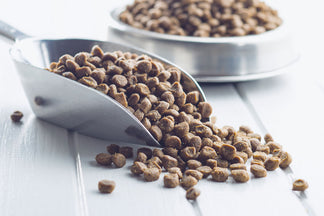In the modern world, food is relatively abundant and there is a wide variety of convenient foods available on the grocery store shelf. More often than not, these foods may contain ingredients of dubious quality, yet the general public mostly chooses to ignore the ingredient label and will still purchase the foods for themselves and their families. For examples, look no further than the cereal or beverage aisles, where many of the products are full of added sugar and artificial colorings. Many precooked entrée meals will also include added sugar and artificial preservatives and colorings as well.
As humans, if we choose to ignore the ingredient label and eat foods like these, than we are the ones that will bear the brunt of those decisions, including obesity and an increase in assorted health ailments related to weight and poor eating like diabetes and heart disease. We will pay later, in the form of reduced life span, lower overall quality of life, and the medical costs of treating ailments that are facilitated by poor eating (and lack of exercise).
For our dogs, the situation is a little different. Dogs do not choose which food to eat, nor do they control how much they eat. Dogs rely on their humans to choose their foods and treats and to portion out these in an appropriate way. Unfortunately, at least in the US, we have not done a good job with this responsibility, as more than half of all dogs (and cats) are estimated to be overweight or obese according to the Association for Pet Obesity Prevention. And judging by the pet food sold in the grocery store aisles, many pet owners are not properly scrutinizing the food that is served to their dog.
When a pet owner chooses which foods to purchase for their pet, in many cases, one of the factors that is considered is the price. Not wanting to spend ‘too much’ on dog food, it is an easy decision for many to choose the bargain priced food. This could be short sighted, and I would argue that this decision might ultimately cost the pet owner more than if they chose a better quality, species appropriate food.
The Hidden Costs of Cheap Dog Food
A multi-step calculation is required to properly compare the prices of different foods. In short, comparing food prices require a re-basing of the size of the bag (or can), the calorie amount per cup, and the density of the food. However, we can still look at some of the hidden costs of choosing a low quality food for your dog. Just like with humans, dogs who eat a poor diet are susceptible to shorter and lower quality lives and are at increased risk for disease.
Overfeeding. Feeding your dog a lower quality food normally means that your dog’s body is not getting the proper nutrition that it needs. This can result in overfeeding because the dog’s body will still crave the nutrition that it needs and it will remain hungry throughout the day, and ultimately express this to the pet owner, who is likely to cave in and overfeed. Even though a food might provide ‘complete and balanced nutrition’ (according to the AAFCO statement), the source of the nutrients can make a big difference as to whether the dog is able to properly absorb and utilize these nutrients. Using plant or grain protein, which dogs cannot digest as well as meat protein is one example. This is often reflected in a dogs poop, as unabsorbed food must make its way out of the body. The dog’s stomach might be ‘full’, but their body might still be hungry for the nutrients it needs.
Increased Medical Costs. There is little doubt in my mind that food can help to prevent or help facilitate the onset of many canine diseases. Serving a dog a cheaper food laden with artificial ingredients, sugar, and inappropriate protein and vitamin and mineral sources can often lead to the onset of health problems. Gastrointestinal issues, cardiovascular illness, osteoarthritis, poor skin and coat, and even cancer can result from feeding a dog low quality food for extended periods of time. Sure, you might be able to save $.10 – $.50 or more a day on food by choosing a low quality product. But if this leads to health problems, the cost of a few vet visits will quickly eliminate these savings and often surpass what might be saved on the cost of food. As an example, a prescription for Rimadyl, a commonly prescribed canine NSAID, can cost over $50 per month (depending on the dosage amounts), easily surpassing the cost savings from purchasing a cheaper food.
Pay Me Now or Pay Me Later
There was an old TV commercial that used the tag line “you can pay me now or you can pay me later”. This commercial suggested that you could spend a little bit more now for a high quality air filter, or a lot of money later for a new carburetor. The implication was that you are better off taking care of the issue early on, before it can grow into something more serious and costly. This tag line is absolutely appropriate for pet food. You can pay now, by upgrading to a better dog food, or you can pay later, by choosing a poor quality dog food and suffering the consequences.

 Food
Food
 Food
Food
 Food
Food
